#Molybdos
Text
Forspoken Photo Dump 59: Avoalet; The Untrodden Forest, Part 7





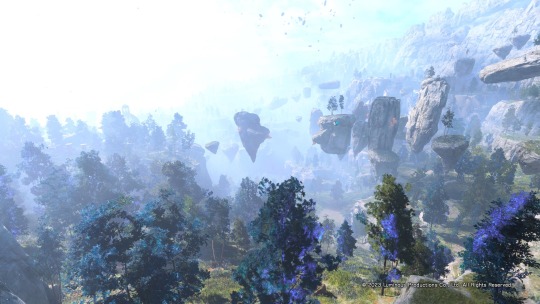



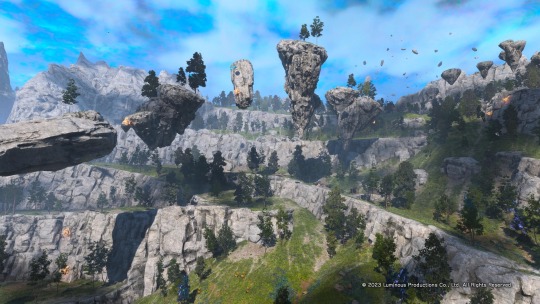
#don't queue yourself a mischief#forspoken#forspoken photo mode#athia#avoalet#avoalet: the untrodden forest#molybdos guild#locked labyrinth: depths#avoalet castle town belfry#ruins of tarihi#ghelenek#untrodden forest belfry#kyptoceras#bonus visoria in the distance
3 notes
·
View notes
Text




Molybdenum is a chemical element; it has symbol Mo (from Neo-Latin molybdaenum) and atomic number 42. The name derived from Ancient Greek Μόλυβδος molybdos, meaning lead, since its ores were confused with lead ores. Molybdenum minerals have been known throughout history, but the element was discovered (in the sense of differentiating it as a new entity from the mineral salts of other metals) in 1778 by Carl Wilhelm Scheele. The metal was first isolated in 1781 by Peter Jacob Hjelm.
Molybdenum does not occur naturally as a free metal on Earth; in its minerals, it is found only in oxidized states.
On June 22nd, 2018, Dahlin was drafted first overall by the Buffalo Sabres. He was the first Swedish player to be drafted first overall since Mats Sundin in 1989, and the second Swede overall to accomplish the feat.
(x. x. x. x.)
part of the nhl periodic table of poems featuring elemental haiku by mary soon lee, created by @simmyfrobby
#hockey poetry#nhl periodic table poems#rasmus dahlin#jeff skinner#buffalo sabres#dahlsy my sweet sunshine#you will outshine them all one day
4 notes
·
View notes
Text
My top 3 chemical element misnomers
Number 3: Technetium
Named from technetos, meaning artificial, because it was the first element to be artificially synthesized rather than discovered. We have since found trace amounts of naturally occuring technetium, technically making the name retroactively wrong.
Number 2: Oxygen
Named from oxys, meaning sharp, because Lavoisier thought it was the central component in all acids. Oxygen is a central component in many natural phenomena - combustion, corrosion of metals, all life on the planet - but not this one, that’s the one thing it doesn’t do.
Number 1: Molybdenum
Named from molybdos, meaning lead. Molybdenum is not lead, that’s a different element, so this name is 100% wrong on every level.
7 notes
·
View notes
Text
We Need Backup
So… this is a tough one.
My room-mates and I are in kind of a bind. We have this rental, see? It’s nice enough, for student digs - modern(ish) furniture, climate control, decent (not great, but decent) wifi connection.
The only real downside is it’s kind of not exactly real. Or not always real. Something about N-phase space and the quantum uncertainty principle, idk.
There’s an overgrown path in one of those school gardens the horticulture club set up a few years back - you know, with all the willow trees and roses? It’s made of weird amber-ish stones laid out in pentagons.
If you follow it the right way, it goes to a little valley on the border (so far as we can tell) of Summer territory. The grass is green, the air is warm, the ring of oaks and maples growing around the rim are always in rich, vivid color; it’s full of thick wildflowers that line the slope, and our house is right at the bottom.
If you follow it the wrong way, though, you wind up stuck in either the 3rd back-up spare props room or a life-sized mural on the wall of the Art building’s atrium. And most people follow it the wrong way.
So, as you might imagine, we don’t get a lot of visitors. Like I said, we rent, and the 4 of us - including me - have never even seen our landlord. There’s a powder-blue ceramic bowl on the mail table: it’s due 3 gold drachmas on the 11th of every month, which always disappear by sunrise. It’s a little odd, yeah. We *do* certainly have questions. But, overall, we like to think we’re lucky.
See, none of us can live in a dorm. Believe me, we’ve tried. Euclid’s closing in on a Phd in Irrational Geometry and Applied Mathemagics, so zher homework assignments keep warping the fabric of reality; rearranging furniture, tearing holes in the walls, and adding extra space where it really shouldn’t be. Molybdos was the only survivor of a questing party gone very, very wrong. She has wicked PTSD, which manifests itself mostly in violent screaming and semi-corporeal night terrors. Silphium’s sick; I’m not sure what’s wrong with him, quite frankly, but being in the dorm rooms made it worse. The medicine that helps him can’t be brewed Ironside; there’s a good chance he’ll never be able to leave.
Me? I had a stalker issue. Someone in a few of my classes heard about a particular family heirloom I’m quite loathe to part with, and they got interested. Very interested. Dangerously interested.
But that’s not the point. The point is, we’re really not used to company.
So , as you might imagine, it was somewhat of a shock to wake up one morning and find a Gentry man on our living room couch.
Unconscious.
Oh, Archivist, he’s in bad shape. There are thick ropes of scars around his neck and wrists.
We had to scrub a while to get rid of all the ingrained filth - there was lots of it, dirt and dried gore and other crap - but it turns out his skin is pale. Not normal Fair Folk pale, either; the kind you get from spending too long underground.
He’s got a blade of a nose, eyes a pure gold color, and bright red hair that seems to smoke if you look at it too long. Three fingers on his left hand are fused together by what look like old, pink scars, and his right arm is tattooed with all these crazy woad designs. You can tell that he used to be powerfully built; the guy’s almost seven feet tall, and his clothes (or what’s left of them) hung from his body.
Well, we cut the damn things off. Then we did our best to clean him up. There were 12 open wounds that needed stitches, and lots of raw areas oozing this pale, watery gold stuff. Not to mention all the aforementioned filth.
Anyway, long story short: something must’ve gone wrong. He’s been here for 3 days , gripped by delirium, caught in the throes of a hellish fever. He keeps moaning and thrashing around, raving in some kind of language none of us speak.
Meanwhile, the wifi’s shot. Our phone lines put out nothing but a ‘drone’ noise, like huge clouds of flies in the speaker. Once everyone got home again the next day, the house won’t let us leave. it seems kind of…protective? I guess? The windows won’t open, and none of the doorknobs turn anymore.
Euclid’s busy with zher chalk, drawing out bizarre patterns on the walls that zhe claims are wards. Silph’s working overtime trying to keep our ‘guest’ alive, and Moly…
Moly hasn’t slept. She’s… erratic. She keeps pacing around, staring out the windows, and clinging to her kukri while she mutters about how ‘they’re coming.’
Meanwhile, there’s a bad wind on the rise. The view outside grows darker every hour. Things have taken to lurking about; black and twisted, they hide in the wild grass and wait beneath the trees. Every time someone looks, there’s more of them: biding their time, in no kind of rush at all. They’ve got us where they want us, and they damn well know it.
Since I can fly sometimes (thanks to that heirloom I mentioned) the others sent me for help. Thankfully, my other form is just smart enough to fit up the chimney flue. It was a tight, painful squeeze, and I lost a few feathers, but I made it.
I’m sorry, Archivist, I didn’t know where else to go. Hopefully the goshawk rapping at your window didn’t freak you out too much.
Do you know who our 'guest’ is? Is there someone - anyone - who can take him to safety? Are any Knights available - and, if so, can they please come drive off the intruders before my friends all get killed? I’d be more than happy to guide anyone who needs assistance.
In return, I brought a charm Euclid made. It was zher semester project junior year, and we thought you might have some use for it:
A crystal lense etched with a Pythagoras tree. Perfect, of course. Those bronze rims around the edge are how you set the thing: they move independently, see? The biggest, outer one is for years, the middle for months, and the tiny inner one for days. Pick a date, work them around so the little notches all line up, then wave your hand over the clear part. It will show 13 minutes of an event you were involved in.
Please hurry.
-Hamaliel
___
Congratulations: the heir apparent of the Autumn Court is dying on your futon, most likely from some manner of assassination attempt. You can officially consider yourself Embroiled In Intrigue.
I will reach out to the Knights, but delicately - a good number of them would view your guest as not much better than whatever is coming for him. But there are always a handful more oriented towards protecting the helpless - any helpless - than they are towards eradicating the things that lurk in the dark woods.
I will also try to send word to a handful of Autumn changelings. If you are lucky they will pass on the news of their lost and found prince to someone powerful enough to come to his aid, and do so in time for it to change anything.
In the meantime, for the good it does: a dull knife of iron with a hilt of scorched bone, which will in your time of need become blindingly bright and razor-sharp. A caltrop tipped with iron, and in the same vein, small tangles of rusty nails, twisted into the shape of apples: guard your windows and doorways and hearth. You are not the only creature that can fly.
#Hamaliel#stories#long post#we need backup#euclid#Molybdos#Silphium#charms#the autumn court#the knights#submission
169 notes
·
View notes
Text
fun science facts
-praseodymium-121 is so radioactive, its half-life is a little over 10 milliseconds; for reference, the speed of an average human blink is 350 milliseconds
-the only two elements that are naturally found as liquids are mercury (simply a metal with an extremely low melting point) and bromine (its electrons are so far apart from its nuclei that it cannot form a crystal structure unless purposefully frozen)
-iodine does not melt, but rather sublimates--when its natural blue-black solid is heated, it immediately vaporizes into a toxic purple gas, bypassing the liquid stage completely
-oganesson is the only synthetically produced noble gas, first created by russian scientists with the atomic number of 118. only three (3) atoms of it have been produced since its discovery in 2002
-zirconium and hafnium have almost identical chemical compositions due to lanthanoid contraction (aka the attractions of negatively charged electrons to positively charged protons becoming nearly equalized)
-alkali metals like sodium and caesium are extremely exothermically reactive with water, often causing explosions. interestingly, the only alkali metal that is not violently reactive with water is lithium
-indium (my favorite element!) is so soft that it can be bitten through and emits what’s described as a high pitched scream when bent rapidly
-nickel’s name means “devil’s copper.” molybdenum’s name comes from the ancient greek Mόλυβδος, or molybdos, meaning “lead”--the two were often confused by inexperienced miners
-the two elements observed to make the strongest and most versatile magnets are neodymium and cobalt
-bismuth is the principal ingredient is the digestive aid pepto-bismol and, while non-toxic, has been observed to occasionally cause gingivitis
-the five rarest naturally-occurring elements on earth are osmium, rhodium, platinum, palladium, and tellurium
#*posts a chemistry fact* *posts a chemistry fact* *posts a chemistry fact*#epic hyperfix time activate
66 notes
·
View notes
Video
instagram
Lights - Hurts live at Muv Hall, Seoul (Korea) 27.01.18 Credit: 📹 @molybdos #Hurts #Theohurts #Adamhurts #Desiretour #TheoHutchcraft #AdamAnderson #Seoul
22 notes
·
View notes
Text
New Post has been published on THIẾT BỊ KHOA HỌC CÔNG NGHỆ
New Post has been published on http://thietbikhoahoccongnghe.com.vn/danh-sach-118-nguyen-hoa-hoc-da-biet.html
Danh sách 118 nguyên tố hoá học đã biết
Bảng phân loại sau đây cho biết 118 nguyên tố hoá học đã biết.
Số, tên và biểu tượng nguyên tử đều phục vụ độc lập dưới dạng các số nhận dạng duy nhất.
Tên được chấp nhận bởi IUPAC; tên tạm thời cho các yếu tố sản xuất gần đây chưa chính thức được đặt tên trong dấu ngoặc đơn.
Nhóm, khoảng thời gian, và khối liên quan đến vị trí của một phần tử trong bảng tuần hoàn. Số nhóm ở đây hiển thị số được chấp nhận hiện tại; đối với số cũ thay thế, hãy xem
Nhóm (bảng tuần hoàn).
Trạng thái vật chất (rắn, lỏng, hoặc khí) áp dụng ở điều kiện nhiệt độ và áp suất tiêu chuẩn (STP).
Xảy ra, các chỉ định bởi một chú thích bên cạnh tên của phần tử, phân biệt một cách tự nhiên xảy ra các yếu tố, phân loại các yếu tố tổng hợp nguyên thủy một trong hai hoặc thoáng qua (từ phân rã), và thêm que đã được sản xuất công nghệ, nhưng không biết là xảy ra một cách tự nhiên.
Actinide, kim loại kiềm, kim loại kiềm thổ, lanthanit, kim loại sau khi chuyển đổi, kim loại, khí quyển, kim loại phi đa hình hoặc phi kim loại tảo, và kim loại chuyển tiếp.
List of chemical elements Z[I] Symbol Element Origin of name[38][39] Group Period Atomic weight[40][41](u (±)) Density(g/cm3) Melt(K) [42] Boil (K) C[I](J/g · K) χ[I] Abundance in Earth’s crust[II](mg/kg) 1 H Hydrogen composed of the Greek elements hydro- and -gen meaning ‘water-forming’ 1 1 1.008[III][IV][V][VI] 0.00008988 14.01 20.28 14.304 2.20 1400 2 He Helium the Greek helios, ‘sun’ 18 1 4.002602(2)[III][V] 0.0001785 —[VII] 4.22 5.193 – 0.008 3 Li Lithium the Greek lithos, ‘stone’ 1 2 6.94[III][IV][V][VIII][VI] 0.534 453.69 1560 3.582 0.98 20 4 Be Beryllium beryl, a mineral 2 2 9.0121831(5) 1.85 1560 2742 1.825 1.57 2.8 5 B Boron borax, a mineral 13 2 10.81[III][IV][V][VI] 2.34 2349 4200 1.026 2.04 10 6 C Carbon the Latin carbo, ‘coal’ 14 2 12.011[III][V][VI] 2.267 3800 4300 0.709 2.55 200 7 N Nitrogen the Greek nitron and ‘-gen’ meaning ‘niter-forming’ 15 2 14.007[III][V][VI] 0.0012506 63.15 77.36 1.04 3.04 19 8 O Oxygen from the Greek oxy-, both ‘sharp’ and ‘acid’, and -gen, meaning ‘acid-forming’ 16 2 15.999[III][V][VI] 0.001429 54.36 90.20 0.918 3.44 461000 9 F Fluorine the Latin fluere, ‘to flow’ 17 2 18.998403163(6) 0.001696 53.53 85.03 0.824 3.98 585 10 Ne Neon the Greek neos, meaning ‘new’ 18 2 20.1797(6)[III][IV] 0.0008999 24.56 27.07 1.03 – 0.005 11 Na Sodium the English word soda (natrium in Latin) 1 3 22.98976928(2) 0.971 370.87 1156 1.228 0.93 23600 12 Mg Magnesium Magnesia, a district of Eastern Thessaly in Greece 2 3 24.305[VI] 1.738 923 1363 1.023 1.31 23300 13 Al Aluminium from alumina, a compound (originally aluminum) 13 3 26.9815385(7) 2.698 933.47 2792 0.897 1.61 82300 14 Si Silicon from the Latin silex, ‘flint’ (originally silicium) 14 3 28.085[V][VI] 2.3296 1687 3538 0.705 1.9 282000 15 P Phosphorus the Greek phoosphoros, ‘carrying light’ 15 3 30.973761998(5) 1.82 317.30 550 0.769 2.19 1050 16 S Sulfur the Latin sulphur, ‘fire and brimstone’ 16 3 32.06[III][V][VI] 2.067 388.36 717.87 0.71 2.58 350 17 Cl Chlorine the Greek chloros, ‘greenish yellow’ 17 3 35.45[III][IV][V][VI] 0.003214 171.6 239.11 0.479 3.16 145 18 Ar Argon the Greek argos, ‘idle’ 18 3 39.948(1)[III][V] 0.0017837 83.80 87.30 0.52 – 3.5 19 K Potassium New Latin potassa, ‘potash’ (kalium in Latin) 1 4 39.0983(1) 0.862 336.53 1032 0.757 0.82 20900 20 Ca Calcium the Latin calx, ‘lime’ 2 4 40.078(4)[III] 1.54 1115 1757 0.647 1 41500 21 Sc Scandium Scandia, the Latin name for Scandinavia 3 4 44.955908(5) 2.989 1814 3109 0.568 1.36 22 22 Ti Titanium Titans, the sons of the Earth goddess of Greek mythology 4 4 47.867(1) 4.54 1941 3560 0.523 1.54 5650 23 V Vanadium Vanadis, an Old Norse name for the Scandinavian goddess Freyja 5 4 50.9415(1) 6.11 2183 3680 0.489 1.63 120 24 Cr Chromium the Greek chroma, ‘color’ 6 4 51.9961(6) 7.15 2180 2944 0.449 1.66 102 25 Mn Manganese corrupted from magnesia negra, see Magnesium 7 4 54.938044(3) 7.44 1519 2334 0.479 1.55 950 26 Fe Iron English word (ferrum in Latin) 8 4 55.845(2) 7.874 1811 3134 0.449 1.83 56300 27 Co Cobalt the German word Kobold, ‘goblin’ 9 4 58.933194(4) 8.86 1768 3200 0.421 1.88 25 28 Ni Nickel from Swedish kopparnickel, containing the German word Nickel, ‘goblin’ 10 4 58.6934(4) 8.912 1728 3186 0.444 1.91 84 29 Cu Copper English word (Latin cuprum) 11 4 63.546(3)[V] 8.96 1357.77 2835 0.385 1.9 60 30 Zn Zinc the German Zink 12 4 65.38(2) 7.134 692.88 1180 0.388 1.65 70 31 Ga Gallium Gallia, the Latin name for France 13 4 69.723(1) 5.907 302.9146 2673 0.371 1.81 19 32 Ge Germanium Germania, the Latin name for Germany 14 4 72.630(8) 5.323 1211.40 3106 0.32 2.01 1.5 33 As Arsenic English word (Latin arsenicum) 15 4 74.921595(6) 5.776 1090 [IX] 887 0.329 2.18 1.8 34 Se Selenium the Greek selene, ‘moon’ 16 4 78.971(8)[V] 4.809 453 958 0.321 2.55 0.05 35 Br Bromine the Greek bromos, ‘stench’ 17 4 79.904[VI] 3.122 265.8 332.0 0.474 2.96 2.4 36 Kr Krypton the Greek kryptos, ‘hidden’ 18 4 83.798(2)[III][IV] 0.003733 115.79 119.93 0.248 3 1×10−4 37 Rb Rubidium the Latin rubidus, ‘deep red’ 1 5 85.4678(3)[III] 1.532 312.46 961 0.363 0.82 90 38 Sr Strontium Strontian, a small town in Scotland 2 5 87.62(1)[III][V] 2.64 1050 1655 0.301 0.95 370 39 Y Yttrium Ytterby, Sweden 3 5 88.90584(2) 4.469 1799 3609 0.298 1.22 33 40 Zr Zirconium Persian Zargun, ‘gold-colored’; German Zirkoon, ‘jargoon‘ 4 5 91.224(2)[III] 6.506 2128 4682 0.278 1.33 165 41 Nb Niobium Niobe, daughter of king Tantalus from Greek mythology 5 5 92.90637(2) 8.57 2750 5017 0.265 1.6 20 42 Mo Molybdenum the Greek molybdos meaning ‘lead’ 6 5 95.95(1)[III] 10.22 2896 4912 0.251 2.16 1.2 43 Tc Technetium the Greek tekhnètos meaning ‘artificial’ 7 5 [98][X] 11.5 2430 4538 – 1.9 ~ 3×10−9[XI] 44 Ru Ruthenium Ruthenia, the New Latin name for Russia 8 5 101.07(2)[III] 12.37 2607 4423 0.238 2.2 0.001 45 Rh Rhodium the Greek rhodos, meaning ‘rose coloured’ 9 5 102.90550(2) 12.41 2237 3968 0.243 2.28 0.001 46 Pd Palladium the then recently discovered asteroid Pallas, considered a planet at the time 10 5 106.42(1)[III] 12.02 1828.05 3236 0.244 2.2 0.015 47 Ag Silver English word (argentum in Latin) 11 5 107.8682(2)[III] 10.501 1234.93 2435 0.235 1.93 0.075 48 Cd Cadmium the New Latin cadmia, from King Kadmos 12 5 112.414(4)[III] 8.69 594.22 1040 0.232 1.69 0.159 49 In Indium indigo 13 5 114.818(1) 7.31 429.75 2345 0.233 1.78 0.25 50 Sn Tin English word (stannum in Latin) 14 5 118.710(7)[III] 7.287 505.08 2875 0.228 1.96 2.3 51 Sb Antimony uncertain: perhaps from the Greek anti, ‘against’, and monos, ‘alone’, or the Old French antimoine, ‘Monk’s bane’ (stibium in Latin) 15 5 121.760(1)[III] 6.685 903.78 1860 0.207 2.05 0.2 52 Te Tellurium Latin tellus, ‘earth’ 16 5 127.60(3)[III] 6.232 722.66 1261 0.202 2.1 0.001 53 I Iodine French iode (after the Greek ioeides, ‘violet’) 17 5 126.90447(3) 4.93 386.85 457.4 0.214 2.66 0.45 54 Xe Xenon the Greek xenos, ‘strange’ 18 5 131.293(6)[III][IV] 0.005887 161.4 165.03 0.158 2.6 3×10−5 55 Cs Caesium the Latin caesius, ‘sky blue’ 1 6 132.90545196(6) 1.873 301.59 944 0.242 0.79 3 56 Ba Barium the Greek barys, ‘heavy’ 2 6 137.327(7) 3.594 1000 2170 0.204 0.89 425 57 La Lanthanum the Greek lanthanein, ‘to lie hidden’ 3 6 138.90547(7)[III] 6.145 1193 3737 0.195 1.1 39 58 Ce Cerium the then recently discovered asteroid Ceres, considered a planet at the time 6 140.116(1)[III] 6.77 1068 3716 0.192 1.12 66.5 59 Pr Praseodymium the Greek praseios didymos meaning ‘green twin’ 6 140.90766(2) 6.773 1208 3793 0.193 1.13 9.2 60 Nd Neodymium the Greek neos didymos meaning ‘new twin’ 6 144.242(3)[III] 7.007 1297 3347 0.19 1.14 41.5 61 Pm Promethium Prometheus of Greek mythology who stole fire from the Gods and gave it to humans 6 [145][X] 7.26 1315 3273 – 1.13 2×10−19[XI] 62 Sm Samarium Samarskite, the name of the mineral from which it was first isolated 6 150.36(2)[III] 7.52 1345 2067 0.197 1.17 7.05 63 Eu Europium Europe 6 151.964(1)[III] 5.243 1099 1802 0.182 1.2 2 64 Gd Gadolinium Johan Gadolin, chemist, physicist and mineralogist 6 157.25(3)[III] 7.895 1585 3546 0.236 1.2 6.2 65 Tb Terbium Ytterby, Sweden 6 158.92535(2) 8.229 1629 3503 0.182 1.2 1.2 66 Dy Dysprosium the Greek dysprositos, ‘hard to get’ 6 162.500(1)[III] 8.55 1680 2840 0.17 1.22 5.2 67 Ho Holmium Holmia, the New Latin name for Stockholm 6 164.93033(2) 8.795 1734 2993 0.165 1.23 1.3 68 Er Erbium Ytterby, Sweden 6 167.259(3)[III] 9.066 1802 3141 0.168 1.24 3.5 69 Tm Thulium Thule, the ancient name for Scandinavia 6 168.93422(2) 9.321 1818 2223 0.16 1.25 0.52 70 Yb Ytterbium Ytterby, Sweden 6 173.045(10)[III] 6.965 1097 1469 0.155 1.1 3.2 71 Lu Lutetium Lutetia, the Latin name for Paris 6 174.9668(1)[III] 9.84 1925 3675 0.154 1.27 0.8 72 Hf Hafnium Hafnia, the New Latin name for Copenhagen 4 6 178.49(2) 13.31 2506 4876 0.144 1.3 3 73 Ta Tantalum King Tantalus, father of Niobe from Greek mythology 5 6 180.94788(2) 16.654 3290 5731 0.14 1.5 2 74 W Tungsten the Swedish tung sten, ‘heavy stone’ (W is wolfram, the old name of the tungsten mineral wolframite) 6 6 183.84(1) 19.25 3695 5828 0.132 2.36 1.3 75 Re Rhenium Rhenus, the Latin name for the river Rhine 7 6 186.207(1) 21.02 3459 5869 0.137 1.9 7×10−4 76 Os Osmium the Greek osmè, meaning ‘smell’ 8 6 190.23(3)[III] 22.61 3306 5285 0.13 2.2 0.002 77 Ir Iridium Iris, the Greek goddess of the rainbow 9 6 192.217(3) 22.56 2719 4701 0.131 2.2 0.001 78 Pt Platinum the Spanish platina, meaning ‘little silver’ 10 6 195.084(9) 21.46 2041.4 4098 0.133 2.28 0.005 79 Au Gold English word (aurum in Latin) 11 6 196.966569(5) 19.282 1337.33 3129 0.129 2.54 0.004 80 Hg Mercury the New Latin name mercurius, named after the Roman god (Hg from former name hydrargyrum, from Greek hydr-, ‘water’, and argyros, ‘silver’) 12 6 200.592(3) 13.5336 234.43 629.88 0.14 2 0.085 81 Tl Thallium the Greek thallos, ‘green twig’ 13 6 204.38[VI] 11.85 577 1746 0.129 1.62 0.85 82 Pb Lead English word (plumbum in Latin) 14 6 207.2(1)[III][V] 11.342 600.61 2022 0.129 1.87 14 83 Bi Bismuth Uncertain, possibly Arabic or German 15 6 208.98040(1)[X] 9.807 544.7 1837 0.122 2.02 0.009 84 Po Polonium Named after the home country of Marie Curie (Polonia, Latin for Poland), who is also the discoverer of Radium 16 6 [209][X] 9.32 527 1235 – 2.0 2×10−10[XI] 85 At Astatine the Greek astatos, ‘unstable’ 17 6 [210][X] 7 575 610 – 2.2 3×10−20[XI] 86 Rn Radon From radium, as it was first detected as an emission from radium during radioactive decay 18 6 [222][X] 0.00973 202 211.3 0.094 2.2 4×10−13[XI] 87 Fr Francium Francia, the New Latin name for France 1 7 [223][X] 1.87 300 950 – 0.7 ~ 1×10−18[XI] 88 Ra Radium the Latin radius, ‘ray’ 2 7 [226][X] 5.5 973 2010 0.094 0.9 9×10−7[XI] 89 Ac Actinium the Greek aktis, ‘ray’ 3 7 [227][X] 10.07 1323 3471 0.12 1.1 5.5×10−10[XI] 90 Th Thorium Thor, the Scandinavian god of thunder 7 232.0377(4)[X][III] 11.72 2115 5061 0.113 1.3 9.6 91 Pa Protactinium the Greek protos, ‘first’, and actinium, which is produced through the radioactive decay of protactinium 7 231.03588(2)[X] 15.37 1841 4300 – 1.5 1.4×10−6[XI] 92 U Uranium Uranus, the seventh planet in the Solar System 7 238.02891(3)[X] 18.95 1405.3 4404 0.116 1.38 2.7 93 Np Neptunium Neptune, the eighth planet in the Solar System 7 [237][X] 20.45 917 4273 – 1.36 ≤ 3×10−12[XI] 94 Pu Plutonium Pluto, a dwarf planet in the Solar System (then considered the ninth planet) 7 [244][X] 19.84 912.5 3501 – 1.28 ≤ 3×10−11[XI] 95 Am Americium The Americas, as the element was first synthesized on the continent, by analogy with europium 7 [243][X] 13.69 1449 2880 – 1.13 0[XII] 96 Cm Curium Pierre Curie, a physicist, and Marie Curie, a physicist and chemist, named after great scientists by analogy with gadolinium 7 [247][X] 13.51 1613 3383 – 1.28 0[XII] 97 Bk Berkelium Berkeley, California, where the element was first synthesized, by analogy with terbium 7 [247][X] 14.79 1259 2900 – 1.3 0[XII] 98 Cf Californium California, where the element was first synthesized 7 [251][X] 15.1 1173 (1743)[XIII] – 1.3 0[XII] 99 Es Einsteinium Albert Einstein, physicist 7 [252][X] 8.84 1133 (1269)[XIII] – 1.3 0[XII] 100 Fm Fermium Enrico Fermi, physicist 7 [257][X] (9.7)[XIII] (1125)[XIII] – – 1.3 0[XII] 101 Md Mendelevium Dmitri Mendeleev, chemist and inventor 7 [258][X] (10.3)[XIII] (1100)[XIII] – – 1.3 0[XII] 102 No Nobelium Alfred Nobel, chemist, engineer, innovator, and armaments manufacturer 7 [259][X] (9.9)[XIII] (1100)[XIII] – – 1.3 0[XII] 103 Lr Lawrencium Ernest O. Lawrence, physicist 7 [266][X] (15.6)[XIII] (1900)[XIII] – – 1.3 0[XII] 104 Rf Rutherfordium Ernest Rutherford, chemist and physicist 4 7 [267][X] (23.2)[XIII] (2400)[XIII] (5800)[XIII] – – 0[XII] 105 Db Dubnium Dubna, Russia 5 7 [268][X] (29.3)[XIII] – – – – 0[XII] 106 Sg Seaborgium Glenn T. Seaborg, scientist 6 7 [269][X] (35.0)[XIII] – – – – 0[XII] 107 Bh Bohrium Niels Bohr, physicist 7 7 [270][X] (37.1)[XIII] – – – – 0[XII] 108 Hs Hassium Hesse, Germany, where the element was first synthesized 8 7 [277][X] (40.7)[XIII] – – – – 0[XII] 109 Mt Meitnerium Lise Meitner, physicist 9 7 [278][X] (37.4)[XIII] – – – – 0[XII] 110 Ds Darmstadtium Darmstadt, Germany, where the element was first synthesized 10 7 [281][X] (34.8)[XIII] – – – – 0[XII] 111 Rg Roentgenium Wilhelm Conrad Röntgen, physicist 11 7 [282][X] (28.7)[XIII] – – – – 0[XII] 112 Cn Copernicium Nicolaus Copernicus, astronomer 12 7 [285][X] (23.7)[XIII] – ~357[XIV] – – 0[XII] 113 Nh Nihonium the Japanese name for Japan, Nihon, where the element was first synthesized 13 7 [286][X] (16)[XIII] (700)[XIII] (1400)[XIII] – – 0[XII] 114 Fl Flerovium Flerov Laboratory of Nuclear Reactions, part of JINR where the element was synthesized; itself named for Georgy Flyorov, physicist 14 7 [289][X] (14)[XIII] – ~210 – – 0[XII] 115 Mc Moscovium Moscow Oblast, Russia, where the element was first synthesized 15 7 [290][X] (13.5)[XIII] (700)[XIII] (1400)[XIII] – – 0[XII] 116 Lv Livermorium Lawrence Livermore National Laboratory (in Livermore, California) which collaborated with JINR on its synthesis 16 7 [293][X] (12.9)[XIII] (709)[XIII] (1085)[XIII] – – 0[XII] 117 Ts Tennessine Tennessee, United States 17 7 [294][X] (7.2)[XIII] (723)[XIII] (883)[XIII] – – 0[XII] 118 Og Oganesson Yuri Oganessian, physicist 18 7 [294][X] (5.0)[XIII][XV] – (350)[XIII] – – 0[XII]
0 notes
Text
Molybdenum
Molybdenum is a chemical element with symbol Mo and atomic number 42. The name is from Neo-Latin molybdaenum, from Ancient Greek Μόλυβδος molybdos, meaning lead, since its ores were confused with lead ores. Molybdenum minerals have been known throughout history, but the element was discovered (in the sense of differentiating it as a new entity from the mineral salts of other metals) in 1778 by Carl Wilhelm Scheele. The metal was first isolated in 1781 by Peter Jacob Hjelm. Molybdenum does not occur naturally as a free metal on Earth; it is found only in various oxidation states in minerals. The free element, a silvery metal with a gray cast, has the sixth-highest melting point of any element. It readily forms hard, stable carbides in alloys, and for this reason most of world production of the element (about 80%) is used in steel alloys, including high-strength alloys and superalloys. Most molybdenum compounds have low solubility in water, but when molybdenum-bearing minerals contact oxygen and water, the resulting molybdate ion MoO2− 4 is quite soluble. Industrially, molybdenum compounds (about 14% of world production of the element) are used in high-pressure and high-temperature applications as pigments and catalysts. Molybdenum-bearing enzymes are by far the most common bacterial catalysts for breaking the chemical bond in atmospheric molecular nitrogen in the process of biological nitrogen fixation. At least 50 molybdenum enzymes are now known in bacteria and animals, although only bacterial and cyanobacterial enzymes are involved in nitrogen fixation. These nitrogenases contain molybdenum in a form different from other molybdenum enzymes, which all contain fully oxidized molybdenum in a molybdenum cofactor. These various molybdenum cofactor enzymes are vital to the organisms, and molybdenum is a essential element for life in all higher eukaryote organisms, though not in all bacteria.
More details Android, Windows
0 notes
Text
Η έκθεση στον μόλυβδο μειώνει το προσδόκιμο ζωής μας
Ο μόλυβδος είναι ένα τοξικό μέταλλο το οποίο κατά καιρούς έχει ενοχοποιηθεί για σοβαρά προβλήματα υγείας. Σε μια τελευταία έρευνα οι επιστήμονες τού «χρέωσαν» και τη μείωση του προσδόκιμου ζωής. Συγκεκριμένα, οι ερευνητές των πανεπιστημίων Johns Hopkins http://breakingnewslive.net/gr/news/h-ek8esh-ston-molybdo-meiwnei-to-prosdokimo-zwhs-mas?uid=92367&utm_source=dlvr.it&utm_medium=tumblr
0 notes
Text
Forspoken Photo Dump 53: Avoalet; The Untrodden Forest, Part 1










#don't queue yourself a mischief#forspoken#forspoken photo mode#athia#avoalet#avoalet: the untrodden forest#frey holland#ramoceros#and its creepy creepy eyes#locked labyrinth: depths#molybdos guild
4 notes
·
View notes
Text
Forspoken Photo Dump 63: Avoalet; The Untrodden Forest, Part 11
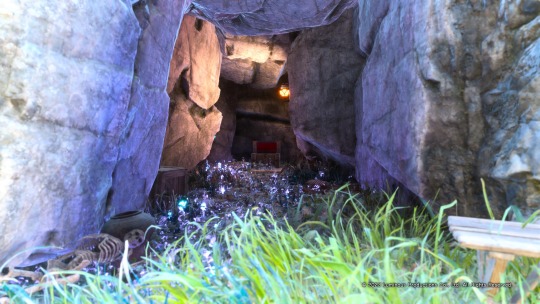


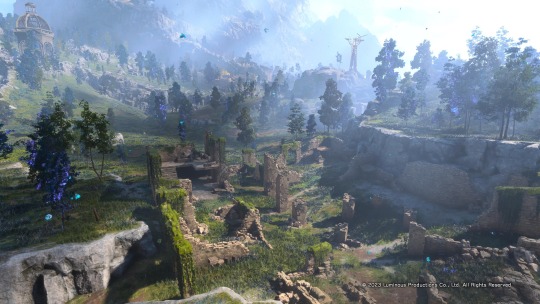

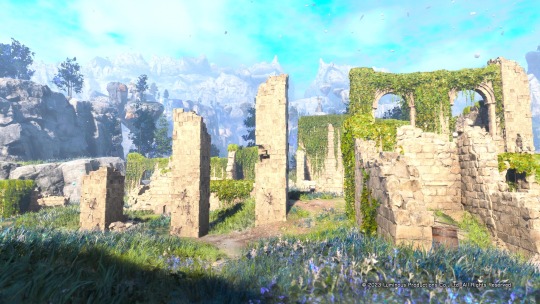
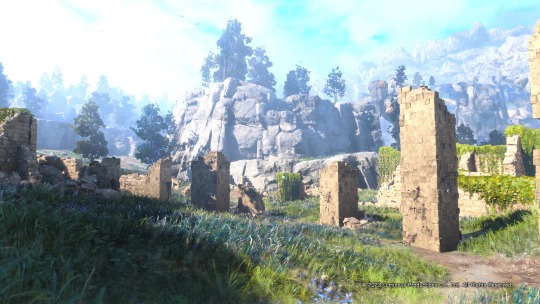
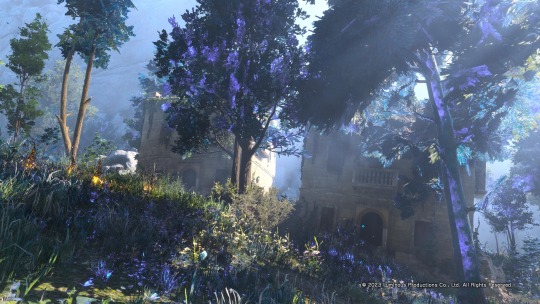
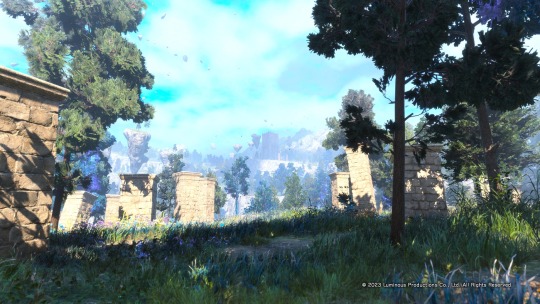
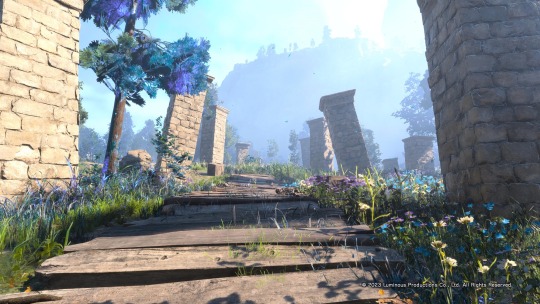
#don't queue yourself a mischief#forspoken#forspoken photo mode#athia#avoalet#avoalet: the untrodden forest#locked labyrith: depths#ruins of tarihi#avoalet castle town belfry#forspoken magic: burrow#frey's magic: burrow#purple magic: burrow#molybdos guild#treasure chest
1 note
·
View note